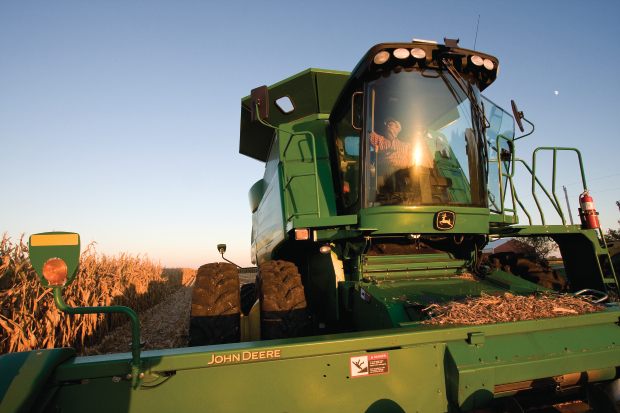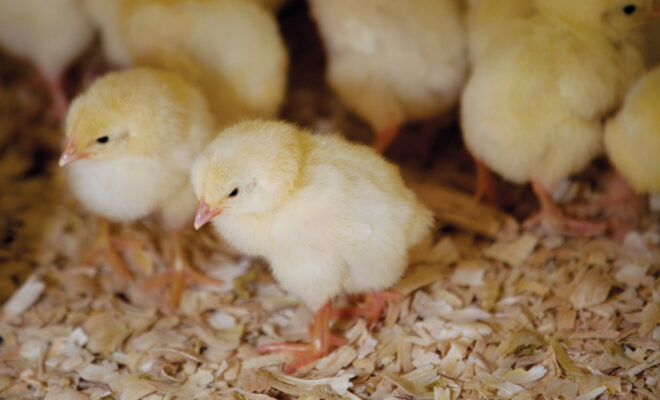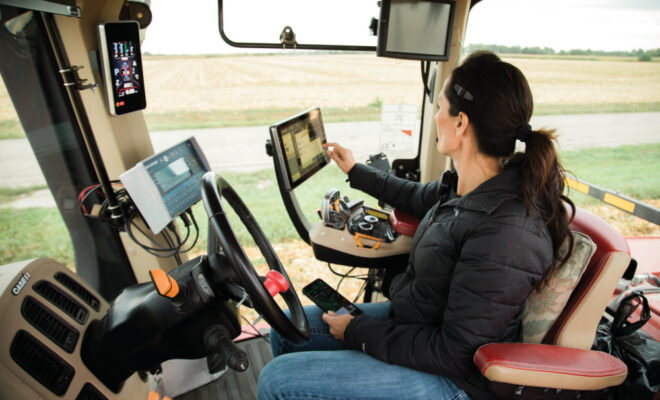
My grandpa might find a smartphone as useful as a coaster. But he can make a tractor drive itself.
At age 78, he tills fields with a 500-horsepower tractor without holding the wheel. His parents and grandparents would pinch themselves if they were alive today to see our family farm. When he was a youngster, his grandpa used horses to plow, plant and cultivate. Progression from horses to hands-free in a lifetime seems unreal, he says.
Most farmers would give auto-guidance two thumbs up. And they literally could do it from the cab of a working tractor or combine. Satellites help guide many of the in-field work on today’s Illinois corn and soybean farms. We still steer on roadways and turns at field ends. But once in the field, a good signal takes over to maintain a straight, back-and-forth pace with little to no overlap. We rarely use location markers to plant or foam markers to spray. Satellites mark our pattern.
My husband estimates 65 percent of his dealership’s customers use some type of guidance technology. He calls guidance systems the cornerstone of precision farming. By day, he works as a precision farming specialist serving a seven-county region in Illinois. Nights and weekends, he farms. He can attest that satellite guidance makes him and other farmers better at what they do. The system keeps him in line after dark.
You could call auto-guidance agriculture’s energy drink. The technology increases farm efficiency and reduces farmer fatigue.
Farmers pay for access to signals more accurate than the navigation systems in cars. The accuracy varies from a few inches to sub-inch, or a fraction of a highway stripe. That precision reduces overlap at tilling, planting, spraying and harvest. This saves money and conserves resources, including fuel, seed and herbicides.
Hands-free driving also makes us less exhausted. Drivers can focus on the implement and field operation without concern for driving straight. They can eat a carton of yogurt or fiddle with a cellphone.
Our family works longer hours and further into the night with its assistance. Older generations of farmers may talk about the harvest moon. We opt for bright headlights and a satellite signal.
Like any technology, we love precision farming systems when they work. The piles of wires and computer displays overwhelm most farmers, traditionally known as do-it-yourselfers. During the busy fall and spring seasons, my husband fields phone calls from confused farmers – lots of them. In fact, one day at the start of planting this year, he logged 66 calls just in the hours before lunch.
Ages span 50 years among the tractor drivers on my family’s farm. Each can vouch for guidance technology’s positive impact on the body and bottom line. Meanwhile, the farm’s youngest generation will grow up with auto-guidance as the norm.
At age 2, our son reached from the buddy seat to wrap his fingers around the handless steering wheel. I blocked his multiple attempts to override the system and plant crooked corn rows. While impressive for adults, auto- guidance seems less exciting for kids. Their future likely has more amazing advances in store.




